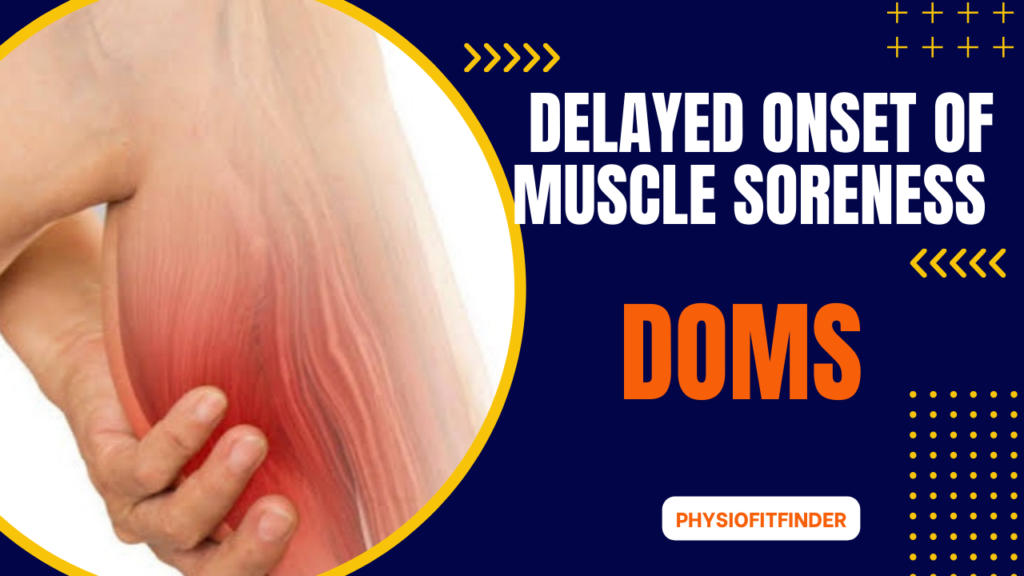Delayed Onset Muscle Soreness (DOMS) is a common condition experienced by individuals after intense or unfamiliar exercise. This post aims to shed light on what DOMS is, its causes, symptoms, and ways to alleviate the discomfort.
What is DOMS?
DOMS, short for Delayed Onset Muscle Soreness, refers to the muscular pain and stiffness that typically develops after a strenuous workout or physical activity. It usually manifests within 12-24 hours post-exercise and can last for several days.
Causes of DOMS
DOMS is caused by microscopic tears in muscle fibers and connective tissue, resulting from eccentric or lengthening contractions during intense physical activity. This type of muscle contraction occurs when the muscle lengthens while under tension, such as during downhill running or the lowering phase of weightlifting.
Symptoms
- Muscle Pain and Tenderness: The affected muscles feel sore and tender to the touch.
- Stiffness: Difficulty in moving the affected muscles due to stiffness.
- Reduced Range of Motion: Limited flexibility and reduced ability to stretch the sore muscles.
- Weakness: Temporary loss of strength in the affected muscle groups.
MORE ARTICLES TO READ
Muscle Spasms: Causes, Symptoms, and Effective Treatment
07 Benefits of Pelvic Floor Exercises for Men
07 Vital Role of Strength Training for Women
Managing DOMS
- Rest and Recovery: Allow the muscles to rest and recover. Avoid overexerting the sore muscles.
- Hydration and Nutrition: Stay well-hydrated and maintain a balanced diet rich in protein to aid muscle repair and growth.
- Gentle Stretching and Movement: Engage in light stretching and low-intensity exercises to improve blood circulation and alleviate stiffness.
- Massage Therapy: Consider getting a massage to help reduce muscle tension and improve blood flow.
- Heat and Cold Therapy: Apply warm compresses or take a warm bath to relax muscles. Cold packs can also help reduce inflammation and soreness.
- Over-the-Counter Pain Relief: Use over-the-counter pain relievers like ibuprofen or acetaminophen to manage pain and discomfort.
Preventing Delayed Onset Muscle Soreness
- Gradual Progression: Gradually increase the intensity and duration of your workouts to allow your muscles to adapt.
- Proper Warm-up and Cool Down: Always warm up before exercising and cool down afterward to prepare your muscles and prevent sudden strain.
- Proper Technique: Ensure you are using the correct form and technique during exercises to minimize strain on muscles.
- Adequate Recovery Time: Allow ample time for your muscles to recover between intense workouts.
Conclusion
DOMS is a natural response to intense physical activity and is an indication that your muscles are adapting and getting stronger. By incorporating proper rest, nutrition, and recovery techniques, you can manage and mitigate the effects of DOMS, allowing you to continue your fitness journey effectively and without unnecessary discomfort.
